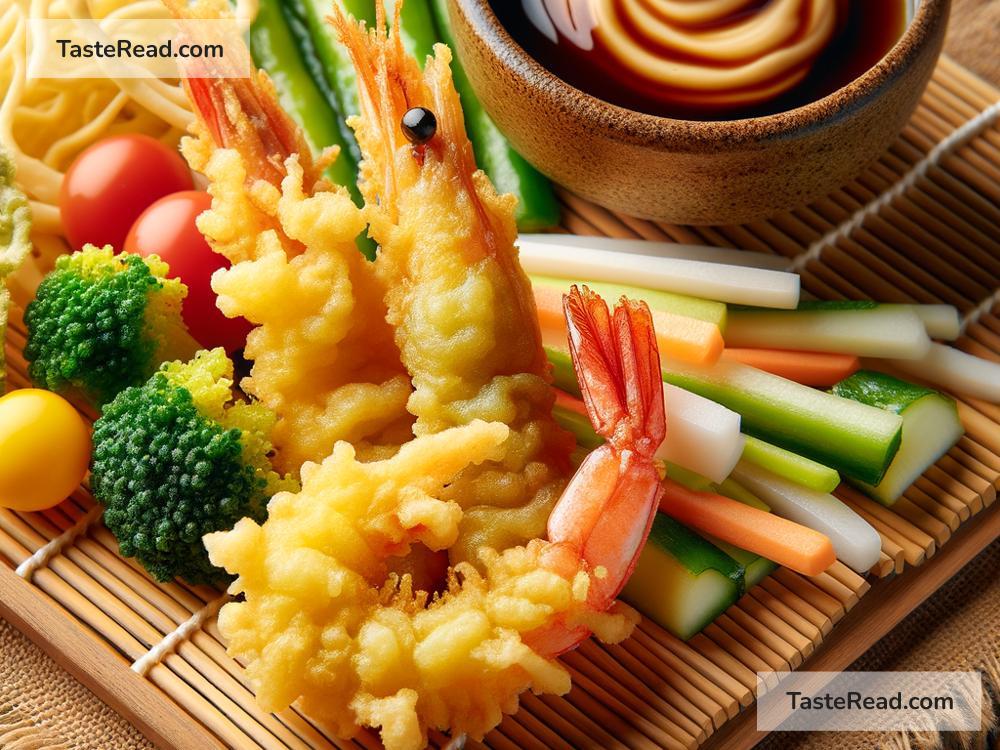When it comes to crispy dishes from around the globe, there’s one that stands out among the rest for its delicate crunch, lightness, and fantastic flavor: Japanese Tempura. This delectable dish has won the hearts of many food lovers, not just in its homeland of Japan but worldwide. But what makes Japanese tempura the ultimate crispy dish? Let’s dive into the delicious world of tempura to find out.
The Art of Tempura
Tempura is essentially a Japanese dish consisting of seafood or vegetables that have been lightly battered and deep fried. The beauty of tempura lies in its simplicity and the skill with which it is prepared. The batter is made from cold water and special tempura flour, which is often mixed very gently and not overly whisked. This technique ensures the batter remains light and can achieve that characteristic crispiness that tempura is known for.
One might wonder, why is the preparation of tempura considered an art? It’s because achieving the perfect tempura requires precise control over several factors – the temperature of the batter, the consistency, the type of oil used for frying, and even the frying temperature. Each of these elements plays a crucial role in ensuring that the tempura comes out crispy on the outside while the inside remains perfectly cooked yet tender.
The Secret to Its Unmatched Crispiness
Many fried dishes claim to be crispy, but none quite match the exquisite crispiness of tempura. The secret lies in its batter and frying technique. Traditional tempura batter is incredibly light and airy, creating a thin, almost translucent coating around the ingredient being fried. Moreover, tempura is fried in a specific way that allows it to cook quickly while attaining that desirable golden color and crisp texture. Unlike heavier, breaded fried foods that can feel greasy and dense, tempura maintains a clean, light feel that is just irresistible.
A Versatile Delicacy
Another fantastic aspect of tempura is its versatility. While shrimp (ebi) tempura might be the most well-known variety, practically any ingredient can be turned into tempura. From sweet potato, mushrooms, and green beans to more creative options like leafy greens or thinly sliced pumpkin, the possibilities are endless. This versatility means that there’s tempura out there for every palate, making it a dish that is universally loved and enjoyed.
A Complete Sensory Experience
Eating tempura is not just about tasting; it’s a comprehensive sensory experience. The sound of the crispy batter as you bite into it, the visual appeal of the golden-brown coating, the aroma of the lightly fried ingredients, and, of course, the taste – all contribute to why tempura is so beloved. It’s a dish that engages all your senses, making it a truly unforgettable eating experience.
Moreover, tempura is often served with a dipping sauce called tentsuyu, made from a blend of dashi (Japanese soup stock), mirin (a type of sweet rice wine), and soy sauce. This dipping sauce complements the flavors of the tempura, adding a new dimension to the dish without overpowering the natural taste of the ingredients.
A Cultural Icon
Tempura is not just food in Japan; it’s a cultural icon. It represents a confluence of Portuguese influence (from whom the technique was originally borrowed in the 16th century) and Japanese culinary expertise. Over the years, tempura has evolved and been perfected within Japan, becoming an integral part of Japanese cuisine. It embodies the Japanese ethos of simplicity, meticulousness, and respect for ingredients, making it a dish that is both historically significant and contemporarily beloved.
In Conclusion
Japanese tempura stands unrivaled as the ultimate crispy dish for a multitude of reasons. Its light and airy batter, meticulous preparation, versatile nature, and the complete sensory experience it offers, all contribute to its unique place in the world of culinary delights. Tempura is more than just a dish; it’s an art form, a cultural icon, and a testament to the precision and care that defines Japanese cuisine. So, next time you sink your teeth into a piece of perfectly cooked tempura, remember, you’re tasting a piece of culinary history that’s been centuries in the making.


